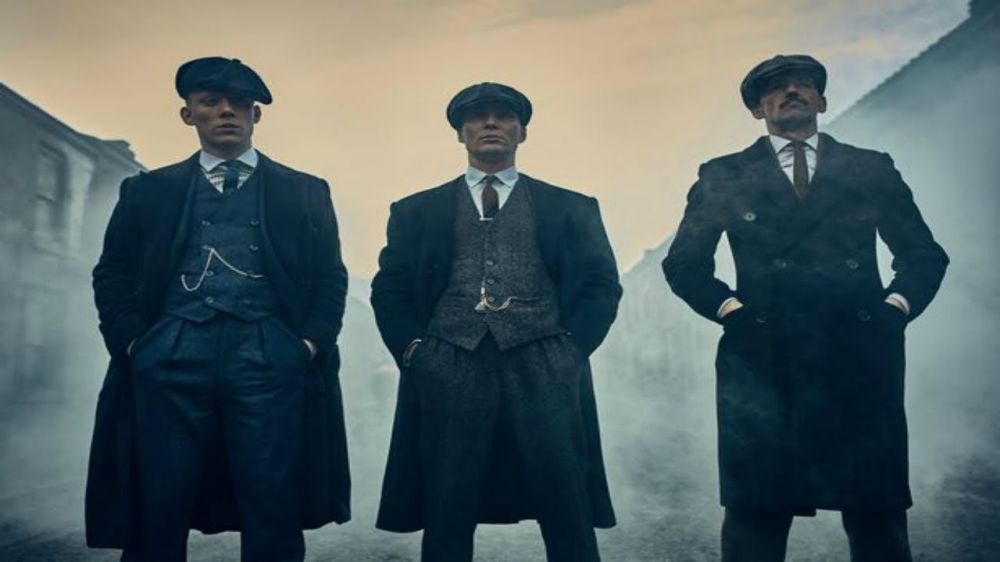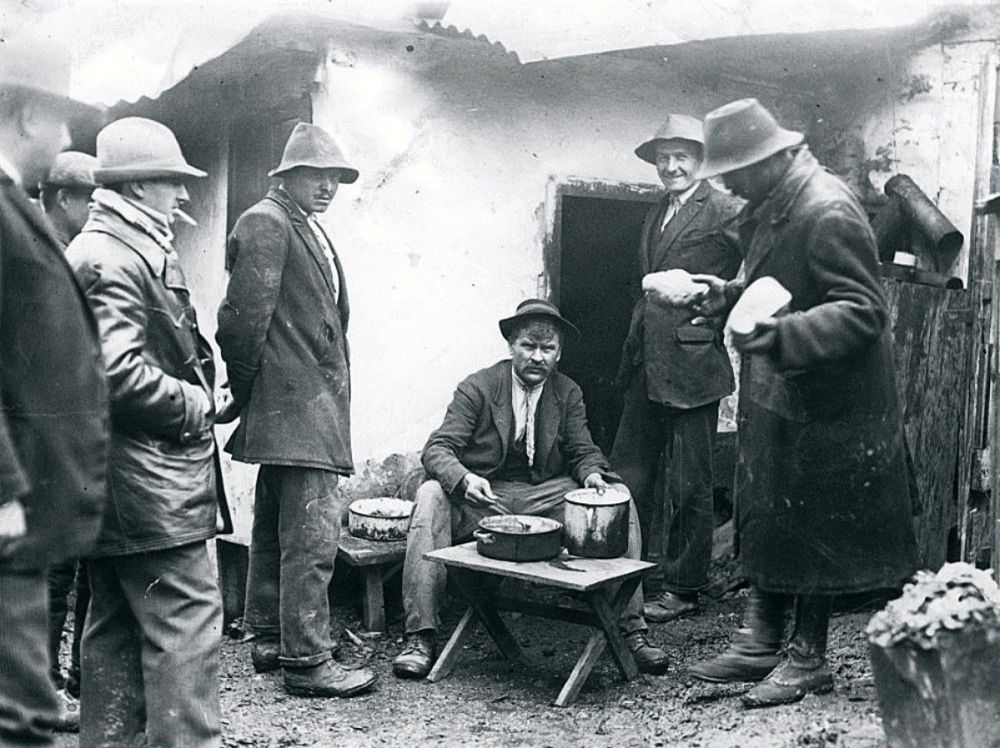Shadows over the Balkans - Time travel to the unknown Belgrade
Shadows over the Balkans is the newest Bjelogrlić’s creation, which in an interesting way deals with the lesser known, but highly interesting topics of one turbulent period.

The show is broadcasted on RTS, public broadcasting service of Serbia, in majority of regional countries, but also in Russia, and the author is Dragan Bjelogrlić, one of the most famous domestic actors, and in the last decades a very respected producer. The name of the show is "Shadows over the Balkans" and it is a quite atypical for Serbian cinematography, but still very successful combination of exciting criminal story, which the Hollywood production would be envious of. It contains historical facts, which in the previous periods were neglected and pushed under the rug, intentionally or accidentally, because of various "higher" aims of the political structures from that time.
The plot of the show covers the period between two world wars, from 1928 to 1940. Belgrade, the city which was constantly on the crossroads and the place where the most diverse global interests used to meet (and where they still meet) and confront, was chosen to be the location frame of the plot. Belgrade from that period was the centre which gathered numerous transcendental groups, starting from opium merchants of which today’s greatest world drug cartels could be envious for their organisation and power, then Russian members of the White Guard led by general Wrangel, the real paramilitary organisation, which then operated on the territory of Kingdom of Serbs, Croats and Slovenes, to various world agencies, such as Soviet People’s Commissariat for Internal Affairs, terrorist organisations such as the Internal Macedonian Revolutionary Organisation, over the Communist Resistance to diverse masonry associations and Nazi sects.
Bjelogrlić covered the unknown topics in a specific way, but he also presented familiar historical characters, placing them in different, less known context and time, and all that was in the period which was prior to one of the greatest destructions the human kind remembered.
OPIUM KINGDOM
Less known fact is that the Kingdom of Serbs, Croats and Slovenes, i.e. Povardarie region, in the period between two world wars provided 43% of the world opium production, which is really unbelievable information, the data for which I am absolutely sure that it was unknown till this show started, even for those who were informed about historical events in the observed period. Also, an unbelievable fact is that the country was directly engaged in smuggling network, enabling the individuals to get enormous incomes and partly the state to get the money for the renewal. Namely, since 1919 till 1930s, main mediators for sale of Macedonian opium were consular agencies of the Kingdom of Serbs, Croats and Slovenes in Paris, Marseille, Basel, London, Chicago and Boston. Besides this, there was an outspread network of channels trading with this popular opiate, where the main role belonged to numerous merchants from the South of Serbia and Macedonia, "white Russians" and their European network, as well as Orient Express, the famous railway route which used to be a synonym for the connection between the East and the West for decades. For all this, the epithet of the historian, Vladan Jovanović, "Balkan Colombia" is really adequate and very well represents this unbelievable historical chapter, which was not very familiar till now.
TERRORISTS, COMMUNISTS AND SPIES FROM BELGRADE COBBLESTONES
Considering geographical position, as well as already mentioned activities related to drug trade, Belgrade in the period between two world wars was a very important centre, but also the place of open confrontation between the most important world agencies, terrorist groups with different aims and interests, as well as fertile ground for spreading various political ideologies of the time.

Besides the data, we all mainly remember from the lessons of history and which refer to the operations of Macedonian terrorist organisation the Internal Macedonian Revolutionary Organisation or Croatian tendencies for separation, the show addresses with particular attention the two extremely important historical characters from these territories. First of them is Ante Pavelić, whose operation and bad actions during the Second World War and existence of the marionette creation, the Independent State of Croatia are really well-known, but in the show, considering the observed time period, that Ante Pavelić represents future time and he is introduced in a different manner, as a Doctor of Law, lawyer of the arrested terrorist of IMRO, who expects to get the most severe punishment for his acts. The show represents Pavelić as a typical member of Croatian middle class, who observes the Serbs in an unsympathetic and disgustedly way and he is generally against the position of the Croats in the new kingdom headed by the Karađorđević dynasty, which almost overnight became the new ruler.
The other character which is dealt with in this show is mentioned only on the margins of the additional literature, for those who wanted to know more about the issues of the period between two world wars at the Balkans. That character is Mustafa Golubić, one of the most vivid characters of the XX century in this region, about whom not many information was known over the decades.
Mustafa Golubić is a man who actively participated in all of the most important historical events in this region. The man, who was born in a Muslim family, became a member of Young Bosnia during the preparation of the Assassination in Sarajevo, then he joined the well-known Chetnik movement led by duke Tankosić, and after the successful Guerrilla warfare and getting the highest orders he was also a Salonica soldier, who after the conflict with the king Aleksandar Karađorđević became passionate communist, who even became a general of the People's Commissariat for Internal Affairs, Soviet Intelligence Services, the forerunner of the well-known and despised KGB. As usual in case when there are no confidential facts, there were various stories and anecdotes about Golubić. One of the most interesting ones is that Mustafa was a lover of the sex symbol and synonym for beauty of that time, the famous Greta Garbo. It is speculated that notifying Gestapo about the Golubić’s location was performed by directive of Josip Broz, considering that he was the man Stalin trusted the most, the one who was in charge of the Balkans by personal Stalin’s directive and who controlled the Broz’s operation, he represented potentially great obstacle for things that later happened. Mustafa Golubić was executed in 1941, in the Pioneer Park in Belgrade.
JATAGAN MALA, A FORGOTTEN FAVELA
Jatagan mala, a neighbourhood in Belgrade, where the main plot of this Bjelogrlić’s show is placed, is actually wild community, which was formed after First World War in the current area between Bulevar Franša d'Eperea street and the complex of hospitals, i.e. from Mostar intersection to Bulevar oslobodjenja street.
As it is presented in the show, the neighbourhood was known for the fact that even police was not glad to go to that part of the city. Prostitution, gambling and drug sale was a completely normal phenomenon and profitable business for the citizens in this part of the city. 
Jatagan mala was truly unhygienic community, created in the period after the "Great War" as a need to provide homes for the great number of citizens, who lost their homes, and the way to survive in the devastated Serbian capital. Over time, many people, who came to Belgrade looking for a better life, settled exactly in this unhygienic neighbourhood, which contributed to population growth in this community. According to some data, this community was a home for 314,000 people in 1939.
This neighbourhood was completely displaced in 1961 during the preparation for the famous Non-Aligned Movement.
Jatagan mala was not the only "neighbourhood" in Belgrade. There were numerous of others, but the counterpart of Jatagan mala was Pištolj mala, which was on the Danube side of the city. It is impossible to talk about disappearance of these and similar places with melancholy and sorrow, on the contrary… However, phenomenological significance and all the events, which happened exactly here and in other similar neighbourhoods, made this topic valuable for detailed analysis and memory, as Bjela did in his show.
This is only a small part of characters, locations and phenomena, which belong to this interesting international production project. We from Novi apartmani suggest that you should watch at least one episode of this high-budget show and get familiar with the history of Belgrade and Serbia in an extremely interesting way.

